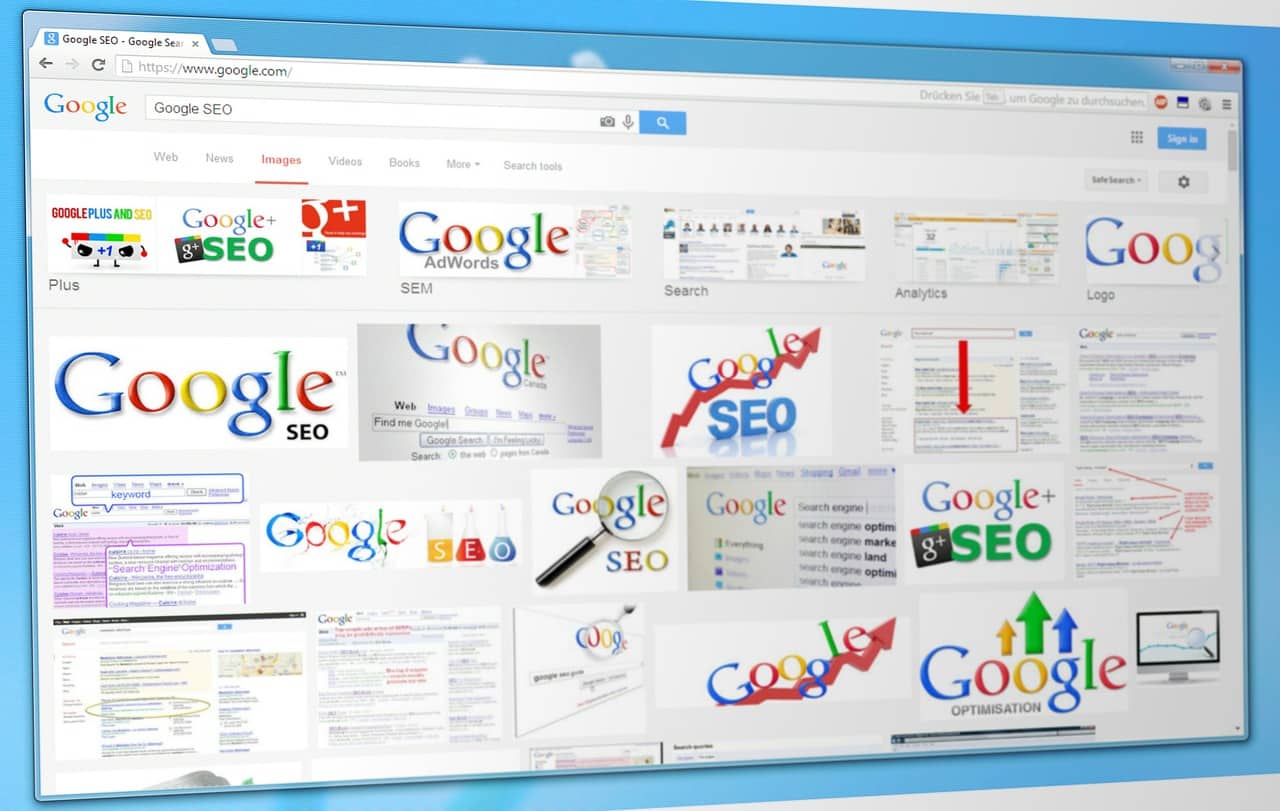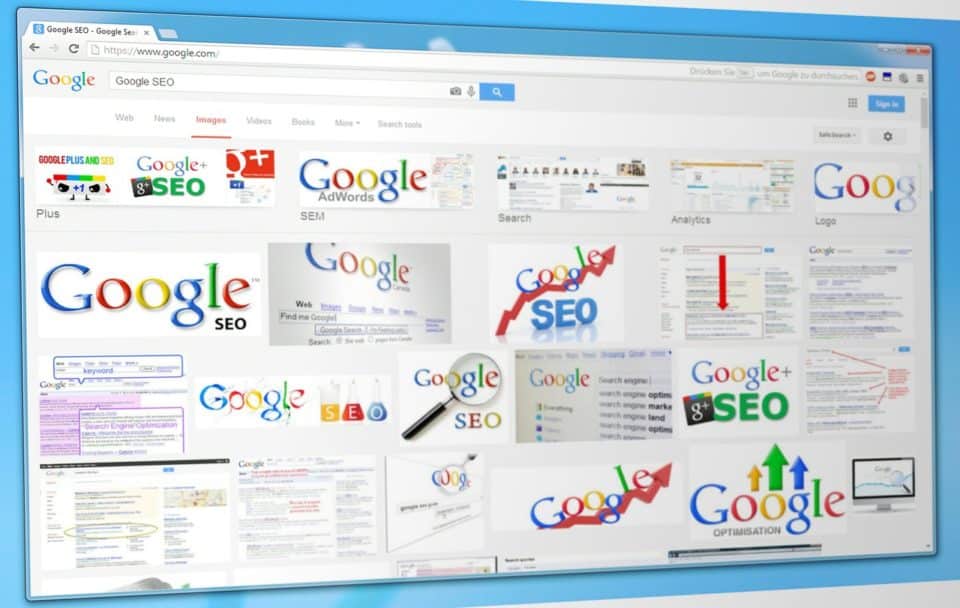By some numbers, Google Images represent around 26.79% of all searches, with Google.com getting 59.30%. This means that Google Images outranks YouTube, Yahoo!, Bing, and Amazon combined.
Hopefully that number gets your attention. Image searching is a big way to score traffic.
Google image results are delivered to hungry web searchers in a couple of different ways.
Users can go directly to Google Images to search the directory, or if a user performs a Google.com search that the Google algorithm thinks might be best satisfied with images, you’ll get some image results in a bar, mixed in with the rest of the search results.
For instance, if you search “wildflowers,” Google will return (for me!) a couple websites about flowers, a few videos about flowers, and an image bar of wildflowers with the heading “images for wildflowers.” In my search window, there are a coveted six spots for images in the widget bar.
Ranking in a google image search is a great way to jump to the frontpage of google by winning a different game. Google image searches alone are a huge traffic opportunity.
Tips for Ranking in Google Image Searches
There’s no reason to spend hours tweaking the nitty-gritty of the HTML if you haven’t already optimized your images according to Google’s best practices. Google will tell you to create pages built for users, and not search engines. T
These tips are arranged in order of importance, and meant to satisfy users. There’s no reason to figure out how to set up an image sitemap (#7) if you haven’t uploaded good pictures (#1), yet.
SEO is changing as search and crawl bots become optimized to find content that “satisfies the searchers query” instead of content that simply hit all the buzzwords. With images, it’s no different. Here are eight easy ways to maximize image rankings:
1. Have good pictures
Google’s algorithm will base its results off of satisfied searchers, and satisfied searchers want high quality pictures. You won’t rank for “cute puppy” with a fuzzy 200 x 400 pixel shot that you dropped onto your dog food website.
Upload original, quality pictures. Google doesn’t want to show duplicates of the same pictures, so I can’t stress the originality and quality part of this enough.
2. Pictures that show clarity instead of a messy collection
Related to having good pictures, but this tip is a bit more specific. Google Images is not an art museum, it’s a web browser. When someone searches for “corgi puppies” they don’t want a bunch of other unrelated objects in the image. If you have images with a lot going on, that’s fine, as long as the message is clear and the corgi is front and center. Your picture of 10 corgi puppies wearing little red bows can still rank for “corgi puppies” if the message is clear.
3. Relevant image file names and tags
Please, don’t name your picture IMG_0248, name it cute_corgi_puppies. Google will use the names of images to determine their relevance to the search. Additionally, you’ll want to update the alt tag with a specific description of the picture. HTML uses the alt tag to render the image with text if it has problems doing so with pixels.
But, please don’t keyword stuff the alt tag! Use it to add descriptive content (width), instead of repeating the title for intensity (depth).
4. Make the page content and image content match well
Google will determine image relevance by the other text and images on the page, as well as the page title and URL. If your corgi picture is on a page about corgis, and the page is named after corgis, you’ve got a better chance of ranking. Google is looking not just for great images, but for images that can link people to meaningful content related to the image search.
5. Maintain good load speeds with the right image files
Make sure that your image format is supported by Google (BMP, GIF, JPEG, PNG, WebP, and SVG). Convert files when necessary to achieve lower file sizes.
Stuffing a bunch of JPEGs onto a page will make it load slow, and if it loads slow, Google images won’t want your pictures. The Google image page has to toss together a hundred images in a single results bar. Make sure your webpages with images contain only a few images, and are optimized for loading speeds.
6. Optimize the HTML Tags
Whenever possible, you should be using <image:title>, <image:caption>, and <image:geo_location> tags.
The <image:title> can give your image a unique title which helps Google identify it. Note that the <image:title> tag is similar to but distinct from the filename. I’d make the image:title similar to, but not identical with, the filename.
The <image:caption> (or <figcaption>) tag is similar to the alt text for the image; it should further describe the image and add any relevant contextual details. The difference between an alt and caption for search purposes is that the alt text assumes you can’t see the image, while the caption assumes that you can.
You also should use an <image:geo_location> tag if at all relevant to the image. If you’re running a small business or taking location-based photographs, then you should definitely use <image:geo_location> tags to tell Google where the images came from. This can help you rank for tasty donut and local photographer searches done from your area.
7. Set up an image sitemap
Note that image sitemaps are only useful if you’ve got a sprawling site with a lot of images. If you do, set up an image sitemap to help Google discover images it might have otherwise missed.
8. Use “img src” to prevent your images from being overlooked
When coding for image resizing based on screen size, you might use <img srcset> or <picture> to designate image sizes. Google warns that some browsers and crawlers don’t take well to these elements. Specifying a backup URL with “img src” will prevent your images from falling through the system in case this happens.
Conclusion
As with text results, the surest way to boost your google image rankings is to follow Google’s recent best practices advice and help searchers satisfy the reason for their search.
If you have quality and original images, which are embedded in helpful content, which has been optimized using available HTML tags–you’ll rank in google image searches.
Google images is still a somewhat untapped area of Google. Start optimizing right away!

